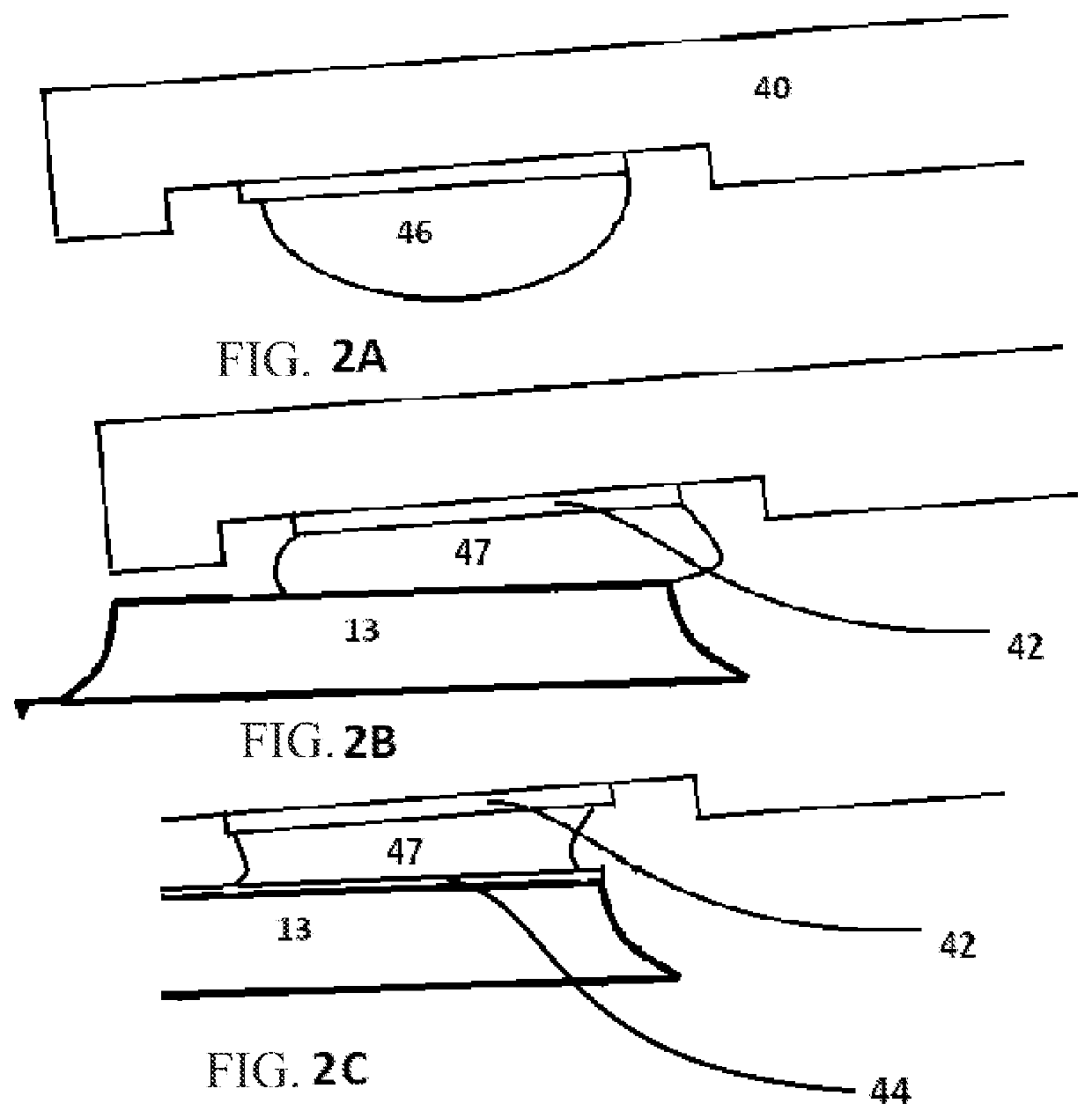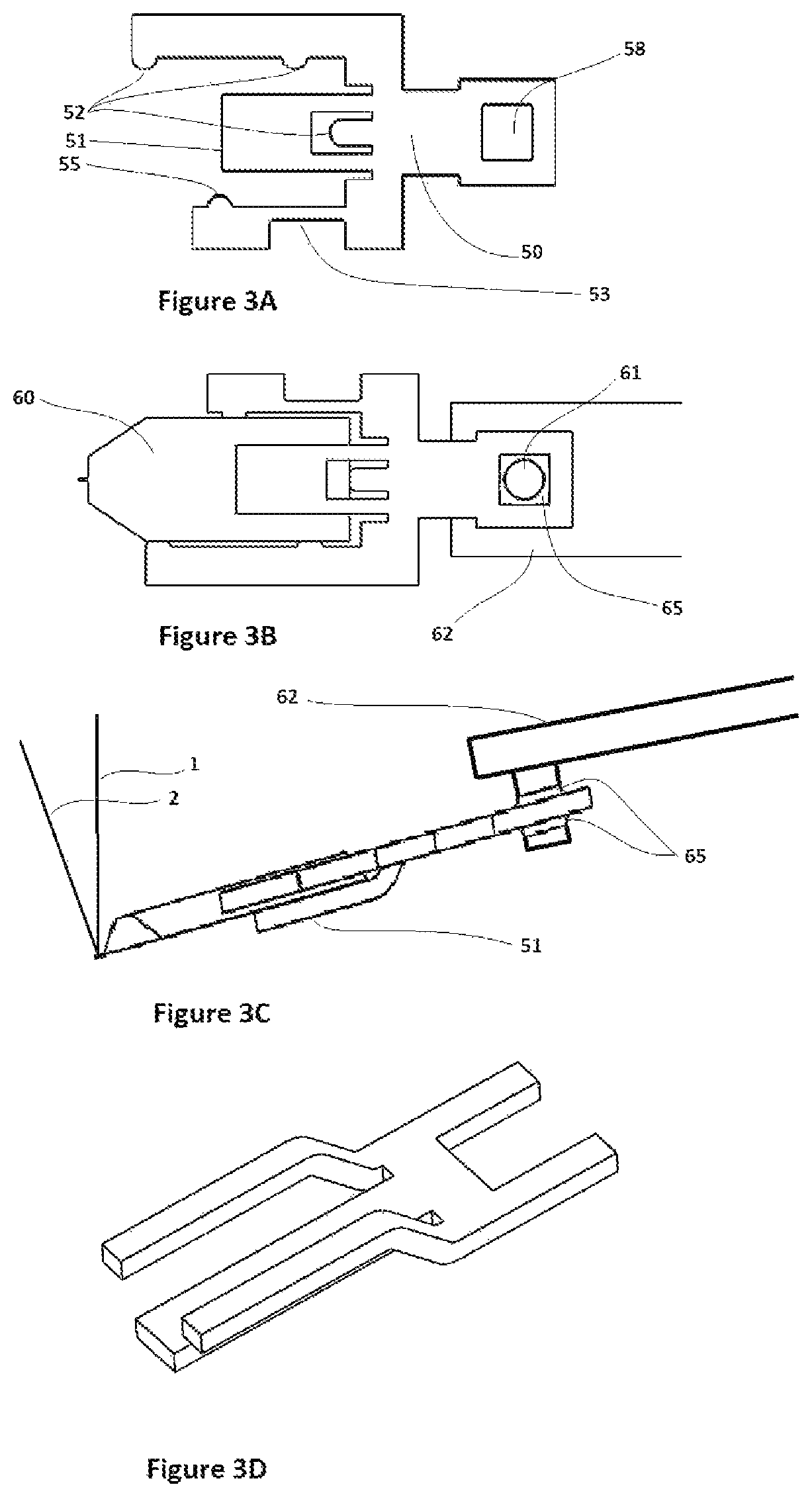Scanned probe mounting design
a technology for scanning probes and mounting devices, applied in scanning probe microscopy, measurement devices, instruments, etc., can solve the problems of inability to manipulate a spm cantilever directly without the millimeter-sized substrate, inability to use clips in several measurements, and inability to interfere with electrical measurements, etc., to achieve clean contact, low added mass, and benefit from strength and conductivity
- Summary
- Abstract
- Description
- Claims
- Application Information
AI Technical Summary
Benefits of technology
Problems solved by technology
Method used
Image
Examples
Embodiment Construction
[0019]In a first implementation shown in FIG. 1, a releasable bonding element, a thermoplastic 17 for an exemplary implementation, is disposed between tip mounting arm 10 and probe mount substrate 13 which is temporarily held with a five axis positioning system 24 employing a vacuum chuck 25 disposed on a two axis gimbal stage 30 whose rotational center is ideally at the height of an AFM cantilever 15 extending from the probe mount substrate 13 thereby minimizing translation while tilting the probe is used to place the probe mount substrate into contacting proximity with the releasable bonding element. A heating element 22, integrally placed adjacent the vacuum chuck 25, is employed to melt the thermoplastic. The heating element may also be disposed upon the tip mounting arm however this arrangement is generally less favorable due to the requirement to provide electrical connection of the heating element as well as its bulk and mass would be added to the AFM head payload. The gimbal...
PUM
 Login to View More
Login to View More Abstract
Description
Claims
Application Information
 Login to View More
Login to View More - R&D
- Intellectual Property
- Life Sciences
- Materials
- Tech Scout
- Unparalleled Data Quality
- Higher Quality Content
- 60% Fewer Hallucinations
Browse by: Latest US Patents, China's latest patents, Technical Efficacy Thesaurus, Application Domain, Technology Topic, Popular Technical Reports.
© 2025 PatSnap. All rights reserved.Legal|Privacy policy|Modern Slavery Act Transparency Statement|Sitemap|About US| Contact US: help@patsnap.com



